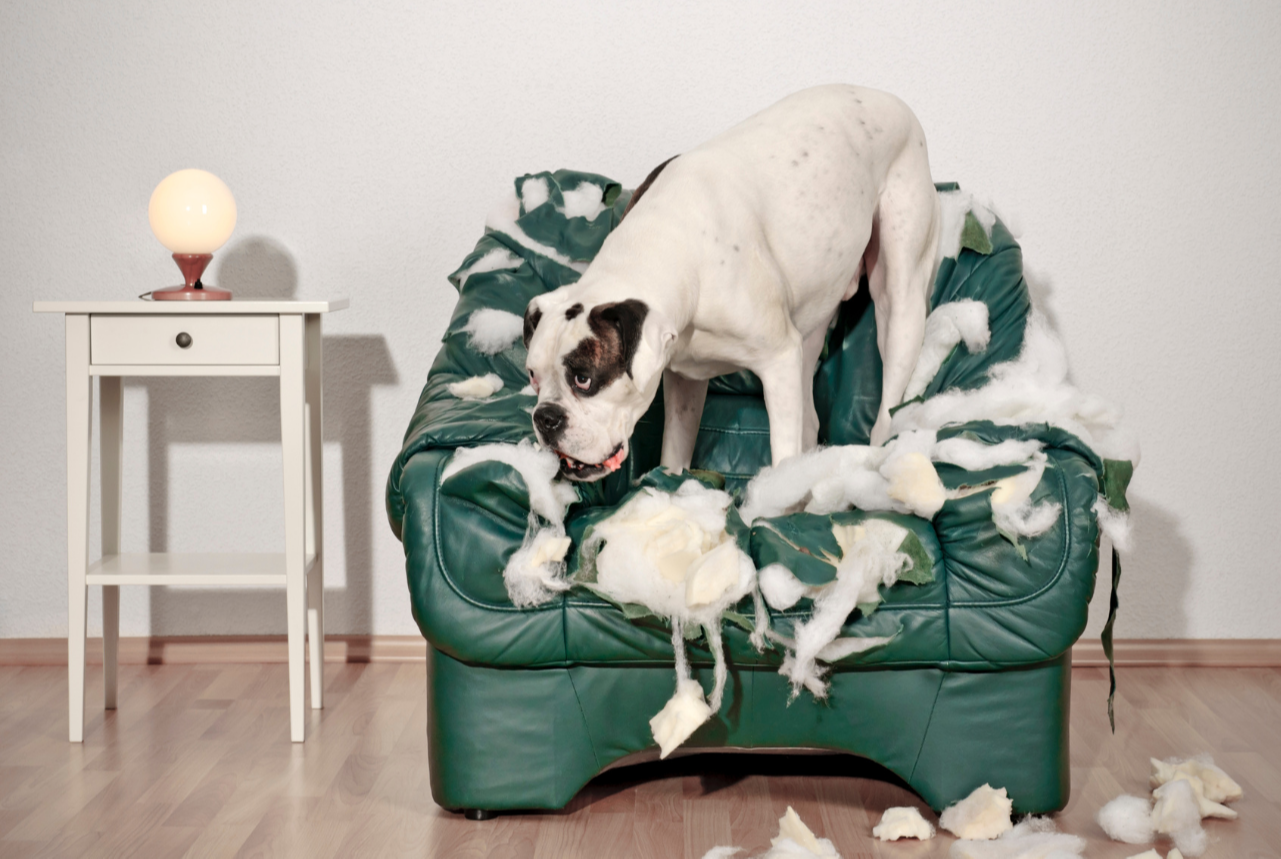A licky mat, also known as a lick mat or licking mat, is a rubber or silicone mat with grooves and ridges where you can spread soft foods like peanut butter, yogurt, or wet dog food. The texture encourages dogs to lick the mat, promoting longer engagement and providing a range of health benefits.
Aids Digestion - Licking is a natural behavior for dogs and can have a soothing effect. When dogs lick a licky mat, they produce more saliva, which contains enzymes that help break down food and aid in digestion. This can lead to improved nutrient absorption and better digestive health.
Reduces Anxiety and Stress- Licking is known to release endorphins, the "feel-good" hormones that help reduce anxiety and stress. Using a licky mat can provide a calming activity for your dog, especially during stressful situations like thunderstorms, fireworks, or when left alone.
Promotes Slow Eating - Dogs that eat too quickly can experience digestive issues such as bloating and vomiting. Licky mats encourage slow eating by making your dog work for their food, which can help prevent these problems and promote healthier eating habits.
Provides Mental Stimulation - Licky mats offer mental stimulation by engaging your dog's mind as they work to lick the food from the grooves. This can help keep them entertained and mentally stimulated, reducing boredom and destructive behavior.
Dental Health - The act of licking can help clean your dog's tongue and gums, reducing the buildup of bacteria and promoting better oral health. While it's not a substitute for regular dental care, it can be a helpful addition to your dog's oral hygiene routine.
Mixing Nutritious Foods - Licky mats are a great way to introduce a variety of nutritious foods into your dog's diet. Here are some healthy options to spread on the mat:
Peanut Butter: Choose unsalted, natural peanut butter without xylitol.
Yogurt: Plain, unsweetened yogurt can provide probiotics for digestive health.
Pumpkin Puree: Rich in fiber, it can help with digestion and weight management.
Mashed Bananas: A good source of potassium and other essential nutrients.
Pureed Vegetables: Carrots, sweet potatoes, and green beans can be mashed and spread for added vitamins and minerals.
Cottage Cheese: Offers protein and calcium, but use in moderation due to its high fat content.
But how safe are licky mats?
Licky mats are typically made from human-grade rubber (thermoplastic rubber or TPR), which is non-toxic and safe for pets. They are designed to be durable, microwave-safe, freezer-friendly, and easy to clean. Most licky mats are dishwasher-safe, making cleanup a breeze. If you don't have a dishwasher, you can clean the mat with warm soapy water and a brush.
You should make sure that you are checking the mat regularly for signs of wear and tear. Replace it if it becomes damaged to ensure your dog doesn't ingest any small pieces.
How should you be using your licky mats?
Using Licky Mats as Meal Feeders:
Portion Control: Spread your dog's regular meals across the licky mat, ensuring the portions are appropriate for their size and dietary needs. You can mix wet dog food with kibble or spread a layer of wet food on the mat.
Consistency: Try to make licky mat feeding a regular part of your dog's routine. Consistency can help them associate the mat with mealtime, reducing anxiety and promoting slow eating.
Mixing Ingredients: For added nutrition and variety, mix in healthy extras like plain yogurt, pumpkin puree, or mashed vegetables. This can enhance the nutritional value of your dog's meals while keeping them engaged.
Using Licky Mats for Snacks and Treats:
Safe Ingredients: Ensure the ingredients you use are safe for dogs. Popular options include peanut butter (unsalted and free of xylitol), plain yogurt, cottage cheese, and mashed fruits like bananas or berries.
Freezing for Longer Enjoyment: Spread the treat on the licky mat and then freeze it. This can provide longer-lasting entertainment and is especially refreshing on hot days.
Small Quantities: Use treats in moderation to avoid overfeeding. Licky mats are a great way to offer small, controlled portions of treats without adding too many extra calories to your dog's diet.
There are many ways to introduce a Licky Mat, my favourite is by positive reinforcement.
If you introduce the licky mat to your dog by spreading a small amount of their favorite treat on it, and encourage them to lick the mat. Once they have done this, praise them for using it.
Be sure to supervise your dog the first few times they use the licky mat to ensure they are using it correctly and not trying to chew or ingest it.
You could also ustilise your mat as a calming tool in times of stress, such as thunderstorms, fireworks, or when guests visit. The act of licking can help calm your dog and reduce anxiety, or as a training aid. To do this, incorporate the licky mat into training sessions as a reward for good behavior. This can reinforce positive behaviors and provide mental stimulation.
By using licky mats effectively, you can enhance your dog's feeding routine, provide mental and physical benefits, and support their overall well-being.



